EMC EXKURSION ANDALUSIEN 2024
There are many ways to acquire knowledge, and the best way is to experience it for yourself – which is why 16 students from the European Mining Course (EMC) set off on an excursion to Andalusia. The group was accompanied by Professor Dr Bernd Lottermoser and Yannick Feldmann from the Institute of Mineral Resources Engineering at RWTH Aachen University and FEMP coordinator John Vaassen. The following report describes the programme and the stops on the excursion.
DAY 1 – The journey and UHU University
In Faro, the starting point of the excursion, the participants were greeted by bright sunshine. During the excursion, the participants learnt that Andalusia has been shaped by many different cultures that have left their mark here. Alongside Cyprus, Andalusia is one of the oldest known places where mining was carried out in the early days of civilisation. The Iberian Pyrite Belt runs through this region and characterises the challenging geological environment. The first stop took the excursion participants to the University of Huelva, where they were welcomed by Prof Jose Nieto.
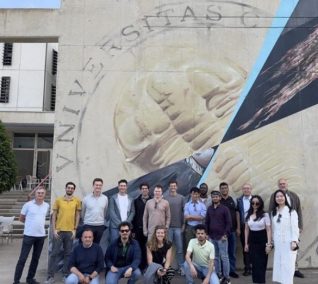
A special feature of the mining department is the research centre (RENSMA). This centre supports research with state-of-the-art tools and techniques and provides access to various instrumental methods through specialised units such as the trace metal unit and the acid mine drainage treatment unit. In addition, the university has developed a patented technology called DAS (Dispersed Alkaline Substrates), which represents a significant advance in the passive treatment of acid mine drainage (AMD). Prof Nieto then explained the studies carried out by the RENSMA research group on a laboratory scale as well as other current and future relevant topics. The planned studies by the Universidad de Huelva on the remediation of mining waste and the economic viability of spoil tips met with great interest from the EMC students.
DAY 2 – Mining history of Minero Rio Tinto, Ferrocarril Minero and Mueso Minero de Rio Tinto
In the morning, the excursion participants visited Atalaya Mining’s Rio Tinto copper mine on the Tinto River near the town of Nerva in the autonomous region of Andalusia in south-west Spain. The mine is not only the namesake of the global corporation Rio Tinto, but has also made the city of Rio Tinto one of the most important sources of copper and sulphur in the world. Despite the enormous economic benefits, however, mining has also led to considerable environmental pollution in the region.

These were explored using the Rio Tinto Railway, a narrow-gauge railway that was in operation from 1875 to 1984. It was built by the British Rio Tinto Company Limited and was used to transport minerals from Rio Tinto-Nerva to Huelva for export to Great Britain. This 300 km long railway line was crucial for regional development and public transport, linking towns such as Nerva, Minas de Riotinto, El Valle, Campillo and Zalamea.
The railway’s fleet comprised 143 steam and diesel locomotives, 2,000 mine cars, 40 passenger cars and 1,300 other cars. Most of the locomotives were built by British companies such as Dübs, Hunslet, Neilson, Avonside, Beyer Peacock and North British. However, the decline of the railway began in 1964 with the creation of the Centre for Industrial Development in Huelva, which shifted the transport of minerals from rail to lorries. Although the railway was closed in 1984, it has been running as a tourist train since 1997 with two historic locomotives – a diesel and a steam locomotive – dating from 1875 and 1890 respectively.
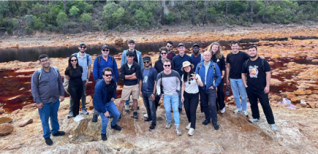
After the train journey, the excursion participants visited the Museo Minero de Rio Tinto. This mining museum is part of the Minas de Rio Tinto Park. It offers a wide range of historical topics. A special feature of this museum is the reconstruction of a Roman mine, which the excursion participants were able to walk through to get an impression of ancient mining conditions. The Roman drainage systems, consisting of water wheels and Archimedean screws, were carefully reconstructed and explained. Together with the detailed information, the equipment on display and the videos about mining from the end of the 19th century, this left a lasting impression on the excursion participants and illustrated the hard working conditions of the miners.

The visit to a modern mining operation in the historic mining province of Minas de Rio Tinto rounded off an informative day. Atalaya Mining has been operating the large Cerro Colorado open-cast copper mine and a 15 Mtpa processing plant (with conventional flotation) in the Rio Tinto district of the Iberian Pyrite Belt since 2015. On arrival, the excursion participants witnessed a blast in the Cerro Colorado open-cast mine.
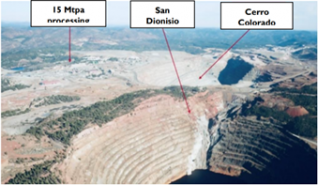
DAY 3 – Mina de São Domingos and Campina de Cima
The third day began with an excursion to the São Domingos mine. The São Domingos mine is a disused open-cast mine in the municipality of Mertola in Portugal. This mine is part of the Iberian Pyrite Belt, which extends over a length of approx. 250 km and a width of 30-50 km from north-west to south-east from Alcacer do Sal (Portugal) to Seville (Spain). The deposits of the Iberian Pyrite Belt are examples of volcanogenic massive sulphide (VMS) deposits associated with polymetallic massive flanks of volcanic cones in the form of pyrite, chalcopyrite, sphalerite, galena and cassiterite, varying in age from 542 to 251 years. Mining in São Domingos began in the Copper Age by the Phoenicians and Carthaginians 4300 years ago. In 1859, the mining concession was leased to the British company Mason and Barry. The mine was operated underground until 1867. It then switched to open-cast mining. After the Second World War, the demand for sulphuric acid increased and pyrite was mined as a source of sulphur. A lot of water was used in the smelting and purification of the sulphur. The water was converted into sulphuric acid, which then seeped into the ground and contaminated large areas around the mine.
This mine is characterised by old mining infrastructure surrounded by old dumps, some of which contain ground ore, slag and rubble. The closure of the mine poses a serious environmental problem as the soil and groundwater are contaminated.
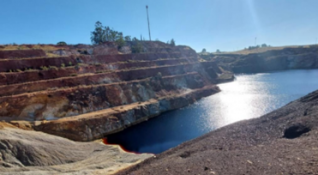
After visiting the São Domingos mine, the excursion participants travelled to the Campina de Cima mine. Campina de Cima is an underground salt mine in the Portuguese town of Loulé. In the 1950s, the village was an agricultural centre. The salt deposit was discovered by chance when the farmers decided to build wells to extract water from deeper layers to support agricultural activity. In 1963, the CLONA company carried out the final exploration work and proved the existence of a massive salt deposit. Construction of the mine began the following year.
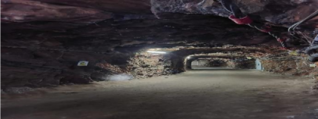
Production has been running since 2022 and focuses on salt processing, sales and tourist exhibitions. The mine employs 60 people, half of whom are involved in tourist exhibitions. The mine has numerous exhibitions, such as the Barbara exhibition or art exhibitions, which take place in the rooms used as storage facilities.
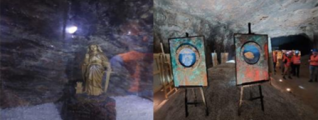
DAY 4 – Sandfire MASTA, Mina de San Telmo, Niebla town and Corta Angostura Mine
The fourth day began at Sandfire MATSA’s headquarters and processing plant in Aquas Tenidas, Spain. The plant is located near the port of Huelva and is supplied by three nearby underground mines: Magdalena, Aguas Tenidas and Sotiel.
The excursion participants then travelled to the Mina de San Telmo. The San Telmo mine is part of the „Iberian Pyrite Belt“, an extensive geological phenomenon that covers most of the south-west of the Iberian Peninsula. It is one of the most important sources of volcanic massive sulphides. The history of mining in this region goes back up to 5,000 years. Long before modern mining, the Romans were already mining in this area, as evidenced by slag heaps, tunnels and tools. The mineralisation of the San Telmo mine is a mixture of lead, zinc and copper sulphides. Mining in San Telmo began in the middle of the 19th century. The San Telmo mine was closed several times and finally abandoned in 1992.
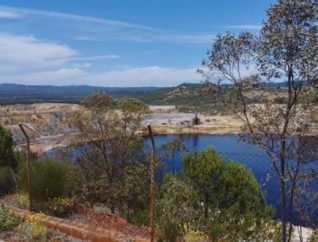
In connection with the San Telmo mine, the excursion participants visited Niebla, a town with a rich history in the province of Huelva in Andalusia. The origins of Niebla go back to the Tartessians (an ancient people), who were known for their advanced metalworking and mining activities. This early fame laid the foundations for Niebla’s long association with mineral wealth. During Roman times, Niebla gained regional importance under the name Ilipla.
After this last day of excursions, the group returned to Germany.



